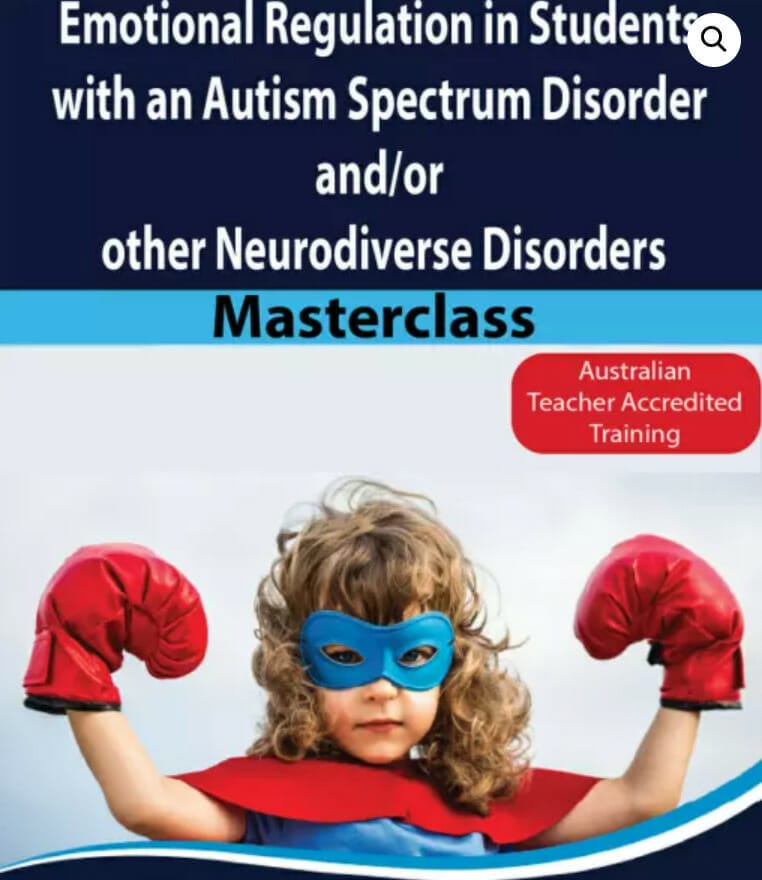The Hidden Exhaustion:
Recognising Masking in Neurodiverse Students
Masking and Autism Explained in this Episode!
Discussed in this Episode:
✅ Schedule regular, discreet check-ins with a trusted adult (teacher, music instructor, grounds person) who can monitor the student’s well-being.
✅ Establish a “safe haven” where students can retreat during recess instead of facing the social challenges of the playground.
✅ Create opportunities for students to come in 10 minutes before the rest of the class to help with tasks and decompress.
✅ Pair students with peers who allow them to be themselves rather than forcing them to mask their authentic selves.
✅ Form interest-based clubs (like the “rabbit club” example) where students can connect with like-minded peers in a structured, supportive environment.
✅ Teach students to recognize their emotional states using visual supports like the “spoon theory” to help them communicate their energy levels.
✅ Ensure students have access to “defrag time” after school – a period with no demands or questions where they can decompress.
✅ Provide sensory tools, comfort items, or activities that help students regulate during transition periods.
✅ Use books like “All Cats Have Aspergers,” “I’m Aspie Girl,” or “The Spectrum Girls Survival Guide” to help students embrace their neurodivergent identity.
✅ Implement the “25 minutes work, 5 minute break” strategy to provide regular sensory and social breaks throughout the day.
Masking and Autism Explained for you Today!
What is Masking?
Masking is when a person on the autism spectrum mimics and uses social scripts learnt from others, in
order to fit in and suppress their autistic tendencies. The goal is often to appear ‘neurotypical’ as they want
to fit in.
On the outside the student may appear…
1. Well behaved
2. Hard Working
3. Eager to Please
4. Perfectionism
But on the inside the student may feel…
1. Anxiety
2. Stomach Aches
3. Excessive Worry
4. Exhaustion
Possible Causes of a Meltdown/Shutdown
– Keeping it together at school/social activities
– Built up pressure of sensory or social experiences
– Burnt out from masking
– Feeling socially excluded – not having a group of friends
– Bullying
– Overstimulation
– Overload

What can you do to address masking and Autism?
1. Implement breaks throughout the day from social & sensory activities
2. Help them find group of friends
3. Create a club
4. Build their autistic identity
5. Celebrate Difference and Diversity in your classroom
6. Teach them Emotional Literacy so they can recognise emotions can self regulate throughout the day
Parent/Carers – What can you do?
1. Have snack and drink ready after school
2. Give them quiet time (don’t ask questions or requests)
3. Give them their own time and space to unwind when they get home
4. Consider getting a pet (Listen to podcast why)
Address Masking and Autism Today!

RECOMMENDED COURSES
Pathological Demand Avoidance (PDA) in the Classroom: Understanding and Teaching Strategies for Educators
RECOMMENDED PODCASTS
Girls often mask here are the books I love to Support Girls
Books For Girls:
Enjoy Masking and Autism Explained? Try these great books to Help with Self Regulation and Prevenative Breaks
Great Books to Help with Self Regulation and Preventative Breaks

Emotional Regulation in Students with an Autism Spectrum Disorder and/or other Neurodiverse Disorders – Masterclass.

Helpful Autistic Lived Experiences Facebook Groups and Organisations:
Enjoyed Masking and Autism Explained? Check out my other Podcasts Referred to:
Episode 81: How Embracing Autistic Strengths Changed His Life: An Interview with Chris Bonnello
UNDERSTANDING AuDHD: Teaching & Supporting Students with Autism and ADHD Co-occurrence
✅ 2 Hours, 8 Lessons
✅ 6 Weeks to Complete 🎁 Bonus 6 Months Access (available until 28 Oct 25)
✅ Certificate of Completion
✅ Lesson Transcripts
 2 Hours
2 Hours

$149


Are you?
- Passing on a student with Neurodiversity to another educator next year
- Do you know a student who will be changing teachers, classrooms, or school settings in 2026
- Planning your staff, classes for 2026
Now is the time to prepare for 2026.
By joining my course, you will get the knowledge, skills and strategies to set yourself and your students up for success in 2026.
If there's even a remote possibility of having a child with Neurodiversity in your classroom next year, join me to prepare now.
Training in the first term often presents challenges:
- Don't want a day out for training when setting up class at the start of the year.
- Students with neurodiversity may start off dysregulated because the necessary structures and strategies are not yet in place.
- Educators find themselves playing catch-up while addressing 'behaviours'.
- Many educators feel overwhelmed.






 2 Hours
2 Hours


 Sorry we no longer ship items outside Australia. Please consider the digital versions of Sue’s Books –
Sorry we no longer ship items outside Australia. Please consider the digital versions of Sue’s Books – 